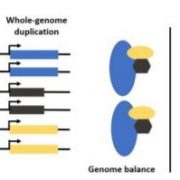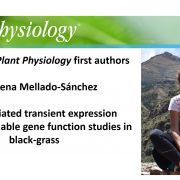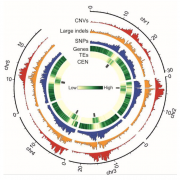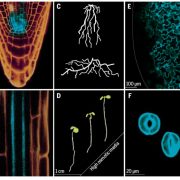
Recognizing Plant Cell authors: Defeng Shen
The Plant Cell, The Plant Cell: Author ProfilesDefeng Shen, co-first author of A Homeotic Mutation Changes Legume Nodule Ontogeny into Actinorhizal-type Ontogeny
Current Position: Postdoctoral researcher, Group of Tonni Grube Andersen, Department of Plant Microbe Interactions, Max Planck Institute for Plant Breeding Research, 50829 Cologne, Germany
Education:…

Gene Dosage Balance Immediately Following Whole-Genome Duplication in Arabidopsis thaliana
Research, The Plant Cell, The Plant Cell: In BriefFlowering plants have witnessed multiple cycles of whole-genome duplication (WGD) over the past 200 million years of evolution. Typically, WGD increases genome size and gene content, followed by gene loss, or fractionation, depending on functional categories. Certain classes of genes are retained as…

Recognizing Plant Physiology authors: Faye McDiarmid
Plant Physiology, Plant Physiology: Author ProfilesFaye McDiarmid, co-first author of Virus-mediated transient expression techniques enable gene function studies in black-grass
Current Position: Scientific Technician at Rothamsted Research
Education: BSc at University College London (UCL)
Non-scientific Interests: Gardening, cooking, shopping,…

Recognizing Plant Physiology authors: Macarena Mellado-Sánchez
Plant Physiology, Plant Physiology: Author ProfilesMacarena Mellado-Sánchez, co-first author of Virus-mediated transient expression techniques enable gene function studies in black-grass
Current Position: PhD student in the group of Cristina Barrero-Sicilia at University of Hertfordshire and Plant Impact, United Kingdom
Education: Ph.D. in Plant…

Plant Domestication: A class for upper-level high school students
Education, MHS Activities0 Comments
/
By Xiang Li, Conviron Scholar.
The assignment was to develop a lesson for school students.
Our team (Xiang Li, Haley Carter, Nikolaos Ntelkis and Samantha Snodgrass) prepared the materials for a class of plant domestication designed for upper high school students. We aim to help students understand…

Reviews: The physiology of plant responses to drought, and forests and drought ($) (Science)
Plant Science Research WeeklyThe increasing global population causes an increasing need for food, but the changing climate means increasing drought occurrences. The April 17 2020 special issue of Science focusses on drought and its effects on food and the environment. The issue includes a fine review by Gupta et al. that provides…

Review: More than a pinch of salt: How plants tolerate salty conditions (Annu. Rev. Plant Biol.)
Plant Science Research WeeklyHigh soil salinity has implications greater than what meets the eye; in addition to the apparent ‘ionic’ stress caused by the toxic sodium (Na+) and chloride (Cl-) ions, it causes osmotic stress (drought-like condition), altered potassium (K+) homeostasis, inhibition of photosynthesis and a plethora…

Meltome atlas: revealing protein thermal stability across the tree of life (Nature Methods)
Plant Science Research WeeklyEnvironmental cues can affect the structure and function of proteins. To get broad empirical information about the effect of temperature on protein stability, Jarzab, Kurzawa, Hopf et al. generated an atlas of proteome thermal stability across 13 model organisms, including bacteria, yeast, worm, fish,…

AthCNV: A map of DNA copy number variations in the Arabidopsis thaliana genome (Plant Cell)
Plant Science Research WeeklyIntraspecific phenotypic variability can be attributed to differences at the genome level such as copy number variations (CNVs). CNVs are large DNA fragments which differ in number between individuals and likely have a crucial evolutionary role. Due to the 1001 Genomes Project, over 1,000 Arabidopsis…

